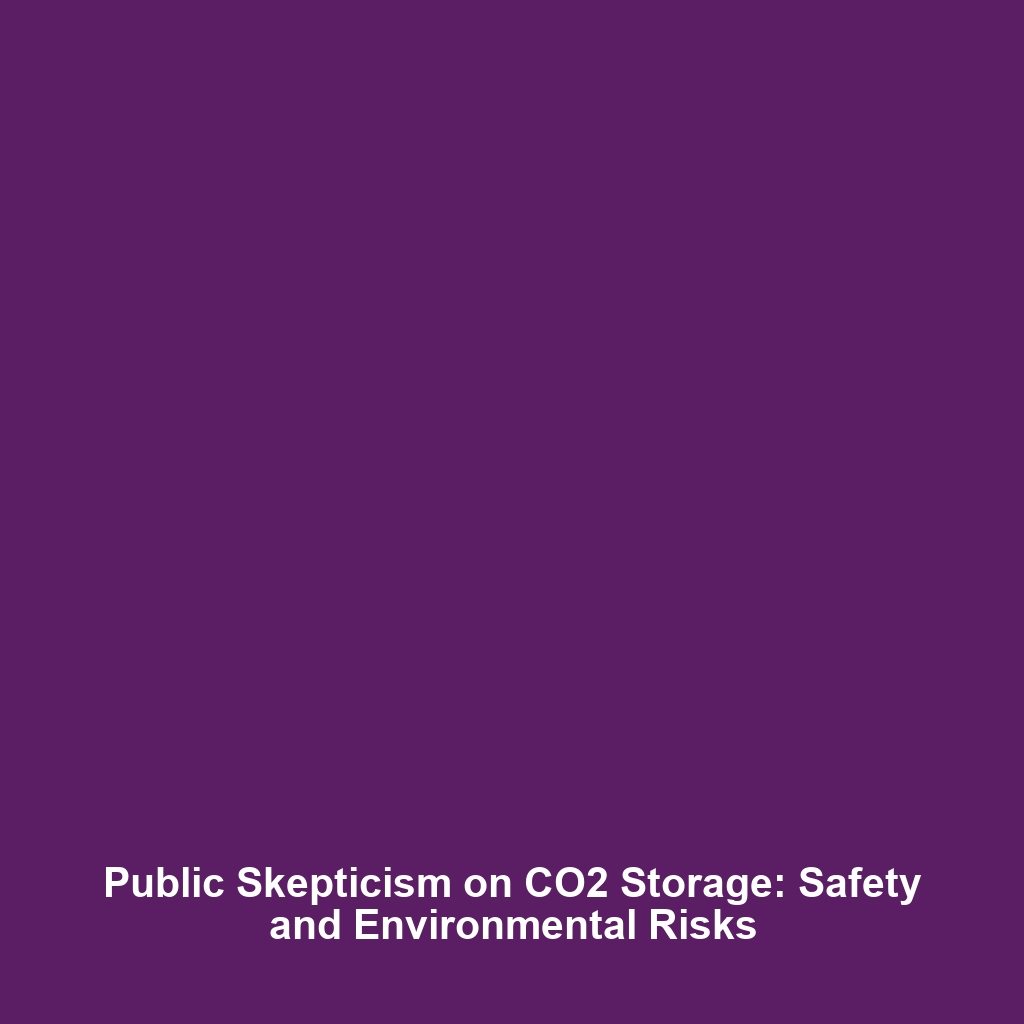Public Skepticism and Safety Concerns in Carbon Capture & Storage (CCS)
Introduction
Public skepticism about Carbon Capture & Storage (CCS) often stems from real concerns regarding the safety of storing CO2 underground and the associated potential environmental risks. As we grapple with climate change and search for innovative solutions, understanding these concerns is crucial. CCS involves the capture of carbon dioxide emissions from industrial processes and its safe underground storage, but mistrust arises due to fears of potential leaks and environmental impacts. Addressing these concerns transparently is vital for the successful implementation of CCS technologies.
Key Concepts
Understanding public skepticism about CO2 underground storage requires a grasp of several key concepts. These include:
The Science of CCS
Carbon Capture & Storage includes the capture, transport, and storage of carbon dioxide emissions. The technology aims to reduce greenhouse gas emissions from large sources such as power plants and industrial facilities.
Safety Measures
Advanced safety measures and monitoring technologies are integral to ensuring that CO2 remains contained underground, addressing fears surrounding leaks and environmental harm.
Environmental Risks
Concerns encompass not only potential leakage but also the long-term stability of storage sites, effects on groundwater, and induced seismicity due to underground pressure changes.
Applications and Real-World Uses
Understanding how public skepticism affects the application of Carbon Capture & Storage (CCS) is essential. Some practical uses include:
- Power Generation: CCS is deployed in electricity generation to capture emissions from coal and gas plants.
- Industrial Processes: Industries like cement and steel are incorporating CCS techniques to mitigate their carbon footprints.
- Enhanced Oil Recovery (EOR): CO2 captured is sometimes used in EOR, where the injection of CO2 helps extract additional oil while storing carbon underground.
Current Challenges
Despite the promise of CCS technologies, there are notable challenges and limitations, including:
- Public apprehensions leading to opposition against proposed storage sites.
- High costs associated with CCS technology and infrastructure development.
- Lack of regulatory frameworks governing the long-term management of CO2 storage sites.
Future Research and Innovations
Ongoing research and innovations are vital to address public skepticism and improve the efficacy of Carbon Capture & Storage (CCS). Future advancements may include:
- Development of new verification technologies to continually monitor CO2 storage sites.
- Innovations in materials and methods for more efficient CO2 capture and storage processes.
- Community engagement strategies to enhance public understanding and trust in CCS methods.
Conclusion
Public skepticism regarding the safety of storing CO2 underground reflects broader concerns that must be addressed for the successful deployment of Carbon Capture & Storage (CCS) technologies. By actively engaging the public, improving technological practices, and prioritizing safety, we can pave the way for a more sustainable future. For further reading on this critical topic, visit our sections on carbon capture technologies and environmental impacts of CCS.
